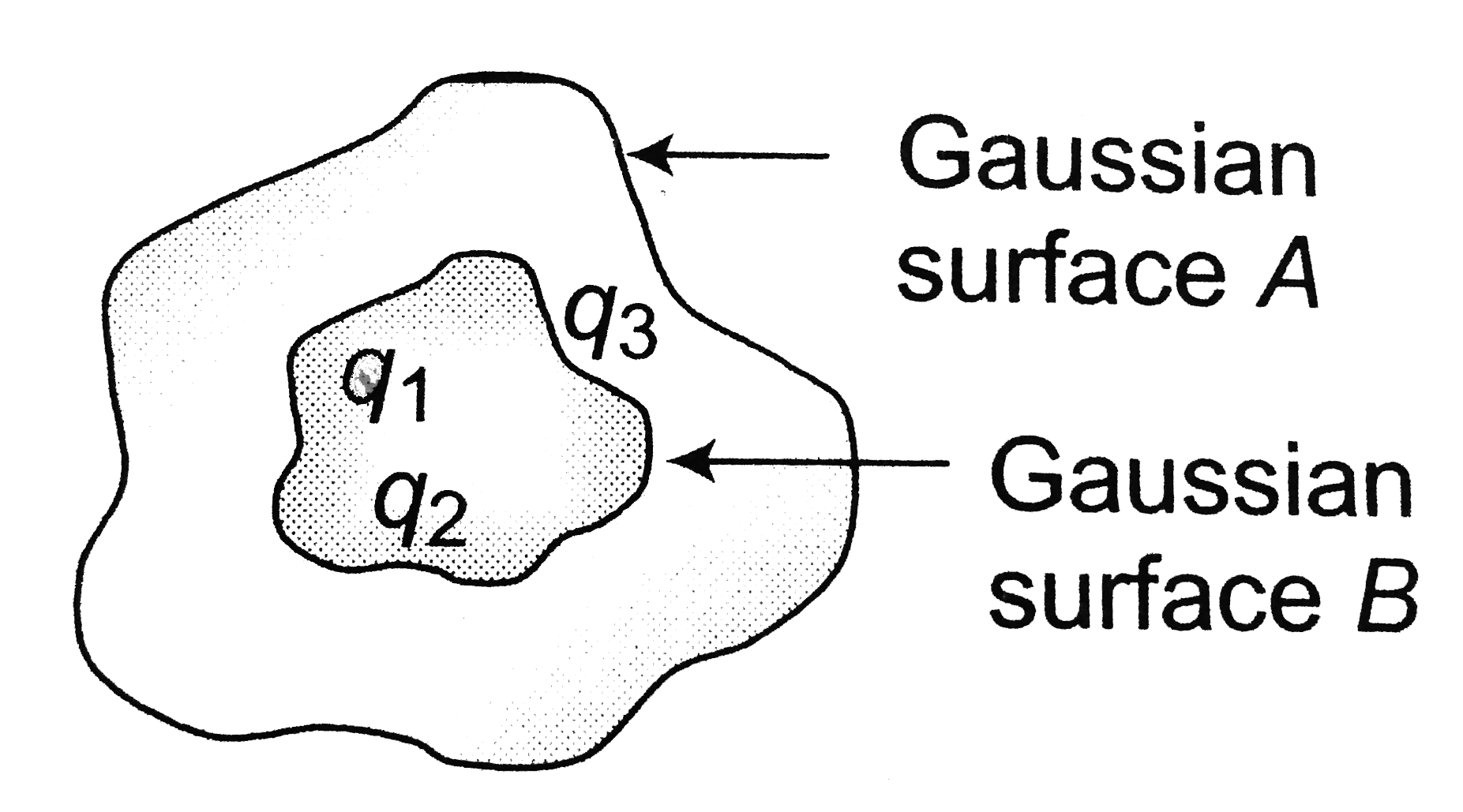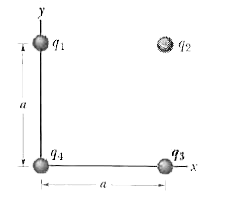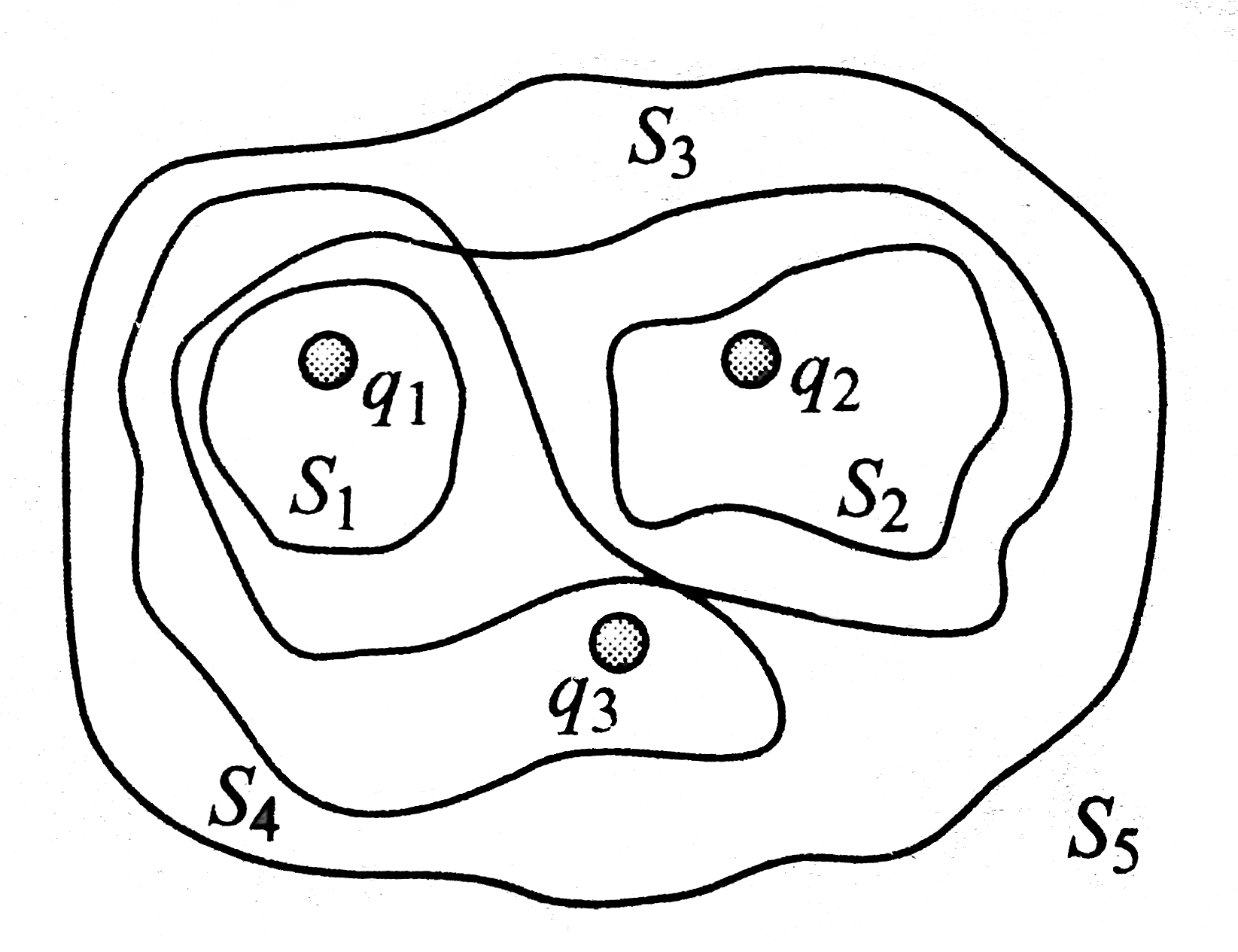The electric flux through a Gaussian surface that encloses three charges given by q1=−14nC,q2=78.85nC,q3=−56nC
103Nm2C−1
103CN−1m−2
6.32×103Nm2C−1
6.32×103CN−1m−2
The correct Answer is:A
Similar Questions
Knowledge Check
The electric flux for Gaussian surface A that enclose the charge particles in free space is (given q1=−14nC,q2=78.85nC,q3=−56nC)
 A103Nm2C−1B103CN−1C−2C6.32×103Nm2C−1D6.32×103CN−1m−2
A103Nm2C−1B103CN−1C−2C6.32×103Nm2C−1D6.32×103CN−1m−2The electric flux through a chlosed surface area S enclosing charge Q is ϕ. If the surface area is doubled, then the flux is
A2ϕBϕ/2Cϕ/4DϕThe electric flux through a closed surface area S enclosing charge Q is ϕ If the surface area is doubled, then the flux is
A2ϕBϕ/2Cϕ/4Dϕ
In Fig., the four particles form a square of edge length a = 5.00 cm and have charges q1=+3nC,q2=−15nC,q3=+15nC, and q4=−30nC. In unit-vector notation, what net electric field do the particles produce at the square's center ?

View SolutionCharge q1 is inside the Gaussain surface , charge q2 just outside the surface. Does the electric flux through the surface.Does the electric flux through the surface depend on q1 ? Does it depend on q2 ? Explain.
View SolutionThe three small spheres as shown in figure carry charges q1=4nC,q2=−7.8nCandq3=2.4nC. Find the net electic flux through each of the following closed surfaces shown in cross section in the figure.
a. S1 b.S2
c. S3 d. S4
e. S5.
Do your answers to parts from (a) to (e) depend on how the charge is distributed over each small sphere? Why or why not?
 .
.
View SolutionThe three small spheres as shown in figure carry charges q1=4nC,q2=−7.8nCandq3=2.4nC. Find the net electic flux through each of the following closed surfaces shown in cross section in the figure.
a. S1 b.S2
c. S3 d. S4
e. S5.
Do your answers to parts from (a) to (e) depend on how the charge is distributed over each small sphere? Why or why not?
 .
.
View SolutionWhat is the electric potential at point P, located at the center of the square of charged particles shown in Fig. 24-16a? The distanced is 1.3 m, and the charges are
q1=+12nC, q3=+31nC,
q2=−24nC, q4=+17nC.
View Solution
